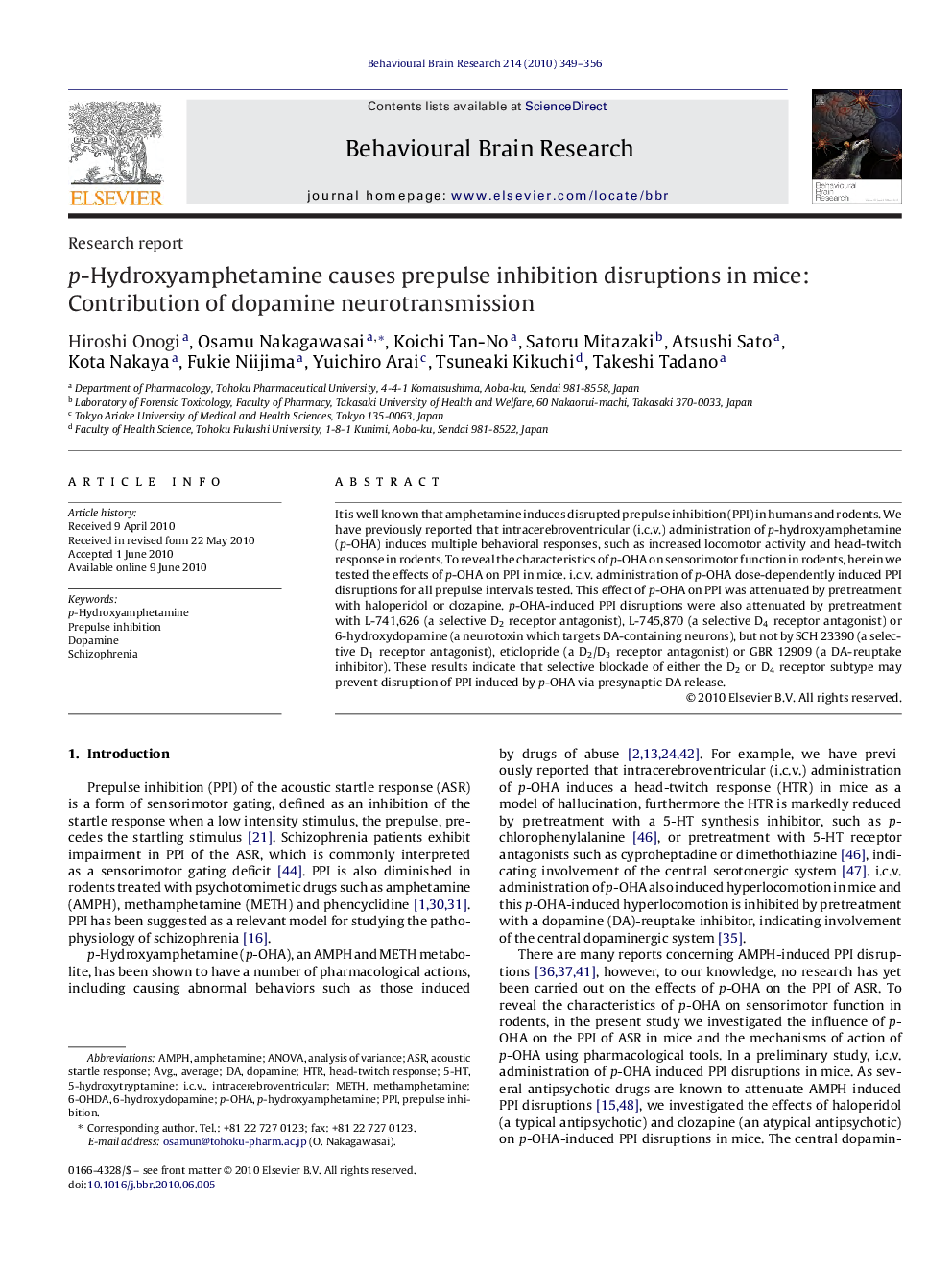| Article ID | Journal | Published Year | Pages | File Type |
|---|---|---|---|---|
| 4314134 | Behavioural Brain Research | 2010 | 8 Pages |
It is well known that amphetamine induces disrupted prepulse inhibition (PPI) in humans and rodents. We have previously reported that intracerebroventricular (i.c.v.) administration of p-hydroxyamphetamine (p-OHA) induces multiple behavioral responses, such as increased locomotor activity and head-twitch response in rodents. To reveal the characteristics of p-OHA on sensorimotor function in rodents, herein we tested the effects of p-OHA on PPI in mice. i.c.v. administration of p-OHA dose-dependently induced PPI disruptions for all prepulse intervals tested. This effect of p-OHA on PPI was attenuated by pretreatment with haloperidol or clozapine. p-OHA-induced PPI disruptions were also attenuated by pretreatment with L-741,626 (a selective D2 receptor antagonist), L-745,870 (a selective D4 receptor antagonist) or 6-hydroxydopamine (a neurotoxin which targets DA-containing neurons), but not by SCH 23390 (a selective D1 receptor antagonist), eticlopride (a D2/D3 receptor antagonist) or GBR 12909 (a DA-reuptake inhibitor). These results indicate that selective blockade of either the D2 or D4 receptor subtype may prevent disruption of PPI induced by p-OHA via presynaptic DA release.
